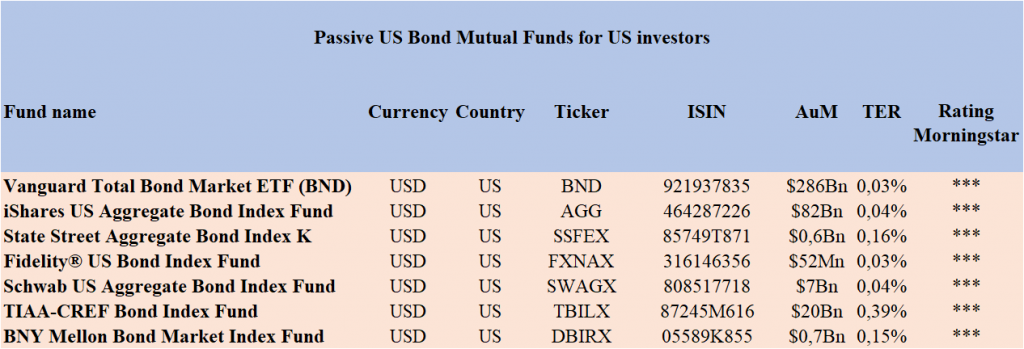We also said how investors should choose and select mutual funds.
To make this theme clearer and more useful for investors, we wanted to present some of the major mutual funds, as an example and for reference to their characteristics.
There are tens of thousands of mutual funds worldwide. It’s 8,000 only in the US.
Even only for the main categories of funds, such as stocks or bonds, global or developed countries, there are thousands.
The Best Of Investment Funds is a series that presents some of the main mutual funds marketed in the world, grouped by categories (see information note at the end of the article).
To facilitate the analysis and selection of the investor, in each of these articles we group mutual funds by types or categories, registration countries and currency denomination.
This Best Of is not intended, nor does it constitute a recommendation. It is a sample of some of the largest funds in each category. There are other funds that may have similar features and be better than these.
Thus, given the available offer, it is up to each investor to decide which funds will be best suited to their case.
In the Tools folder, a summary form containing a summary description of the main characteristics of the main funds of each category is also presented.
Investment funds covered in this article:Vanguard Total Bond Market ETF (BND); iShares US Aggregate Bond Index Fund; State Street Aggregate Bond Index K; Fidelity US Bond Index Fund; Schwab US Aggregate Bond Index Fund; TIAA-CREF Bond Index Fund; BNY Mellon Bond Market Index Fund
These are the largest bond mutual funds in terms of assets under management, attracting more capital and investors.
These funds are suitable for investors whose cash currency is the US dollar, so they capture the interest of U.S. investors and those from countries whose currency is indexed to the dollar.
They can also be used by investors with currencies other than the dollar, although foreign exchange risk in bond investment introduces volatility and investment in the investor’s currency is preferable.
Considering the importance of this asset and market, these funds should be part of the stock investment portfolio of any individual investor whose currency is the U.S. dollar.

Fund: Vanguard Total Bond Market ETF (BND)
Ticker: BND
CUSIP: 921937835
Assets under Management (AuM): $286 Bn
TER: 0.03%
Benchmark: Bloomberg U.S. Aggregate Float Adjusted
Currency: USD
Domicile: US
Registered countries: US
Link: https://investor.vanguard.com/etf/profile/bnd
Morningstar Rating: ***
Fund: iShares US Aggregate Bond Index Fund
Ticker: AGG
CUSIP: 464287226
Assets under Management (AuM): $82Bn
TER: 0.04%
Benchmark: Bloomberg U.S. Aggregate Bond Index
Currency: USD
Domicile: US
Registered countries: US
Link: https://www.ishares.com/us/products/239458/ishares-core-total-us-bond-market-etf
Morningstar Rating: ***
Background: State Street Aggregate Bond Index K
Ticker: SSFEX
CUSIP: 85749T871
Assets under Management (AuM): $0.6Bn
TER: 0.16%
Benchmark: Bloomberg U.S. Aggregate Bond Index
Currency: USD
Domicile: US
Registered countries: US
Link: https://www.ssga.com/us/en/institutional/ic/funds/state-street-aggregate-bond-index-fund-class-k-ssfex
Morningstar Rating: ***
Fund: Fidelity® US Bond Index Fund
Ticker: FXNAX
CUSIP: 316146356
Assets under Management (AuM): $52Bn
TER: 0.03%
Benchmark: Bloomberg U.S. Aggregate Float Adjusted
Currency: USD
Domicile: US
Registered countries: US
Link: https://fundresearch.fidelity.com/mutual-funds/summary/316146356
Morningstar Rating: ***
Fund: Schwab US Aggregate Bond Index Fund
Ticker: SWAGX
CUSIP: 808517718
Assets under Management (AuM): $7Bn
TER: 0.04%
Benchmark: Bloomberg U.S. Aggregate Bond Index
Currency: USD
Domicile: US
Registered countries: US
Link: https://www.schwabassetmanagement.com/products/swagx
Morningstar Rating: ***
Fund: TIAA-CREF Bond Index Fund
Ticker: TBILX
CUSIP: 87245M616
Assets under Management (AuM): $20Bn
TER: 0.18%
Benchmark: Bloomberg U.S. Aggregate Bond Index
Currency: USD
Domicile: US
Registered countries: US
Link: https://www.nuveen.com/en-us/mutual-funds/tiaa-cref-bond-index-fund?shareclass=Retail
Morningstar Rating: ***
Fund: BNY Mellon Bond Market Index Fund
Ticker: BND
CUSIP: 05589K855
Assets under Management (AuM): $0.7Bn
TER: 0.15%
Benchmark: Bloomberg U.S. Aggregate Bond Index
Currency: USD
Domicile: US
Registered countries: US
Link: https://im.bnymellon.com/us/en/intermediary/funds/05589K855#?section=overview
Morningstar Rating: ***
The following are links to all the mutual funds mentioned:
https://investor.vanguard.com/etf/profile/bnd
https://www.ishares.com/us/products/239458/ishares-core-total-us-bond-market-etf
https://fundresearch.fidelity.com/mutual-funds/summary/316146356
https://www.schwabassetmanagement.com/products/swagx
https://www.nuveen.com/en-us/mutual-funds/tiaa-cref-bond-index-fund?shareclass=Retail
https://im.bnymellon.com/us/en/intermediary/funds/05589K855#?section=overview
Informational/explanatory note:
In this series we will present many of the best mutual funds available in the various geographies for the individual investor, by each category and in a structured way.
There are tens if not even hundreds of thousands of mutual funds available worldwide.
It would be unthinkable to analyze even the vast majority of them.
That is why it is necessary to establish criteria to focus the analysis.
The criteria we have taken up are as follows:
- Grouping by categories of funds;
- Superior performance in terms of profitability and risk, whenever possible using the rating;
- Availability and accessibility for the investor;
- Size and reputation of management companies.
The various funds are classified by several multiple categories in terms of their investment object:
- 4 main categories per asset, including stocks, bonds, blend or balanced, and others;
- 7 categories by geography, covering global, regional (US, Europe, Emerging Markets, Japan, the UK and Germany);
- 2 categories in relation to the management model, active or passive.
In this sense, at the limit we could have up to about 56 categories (=4x7x2), but we will only cover the most important ones.
We also want to address other important factors such as the availability of mutual funds to the individual investor of the various countries of the world (domicile or origin of the investor) and the currency of denomination.
As we have seen in another article, the investment in stocks must be made in the investments currency (i.e. the securities that constitute its object or destination), while the investment in bonds must be made in the investor’s currency (from the treasury of the funds or from the origin).
We start with actions, in the two largest geographies, world and USA, and addressing for each the two management models.
Next we move on to the obligations, to 3 geographies, world, USA and Eurozone, also covering the 2 management models.
Then we’ll look at the following.
For each case, we consider the availability of funds in the investor’s home or origin market, seeking to serve the American and European markets (giving note of access by other countries, whenever possible).
For each fund, we present its main practical characteristics, in order to allow easy identification, knowledge and investment, namely the designation, the value of assets under management, the country of domicile, and a link to the most detailed information.
The ticker or stock symbol is an abbreviation used to uniquely identify the publicly traded securities of a particular company on a given stock market.
The ISIN or International Securities Identification Number is a 12-digit alphanumeric code that identifies a specific security.
CUSIP is a unique identifier representing the Committee on Uniform Securities Identification Procedures and is used to identify securities registered in the U.S. and Canada.
The expense ratio is the rate of management fees associated with the administration of mutual funds.
There are other costs associated with investing in funds, such as trading fees, legal fees, audit fees, and other operating expenses (e.g. deposit and custody of securities).
The sum of all fees associated with investment in funds is called a total expense ratio and, as we have seen in other articles, it is very important in the analysis and selection of funds.




















